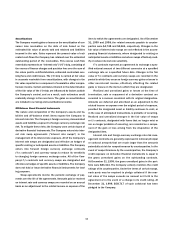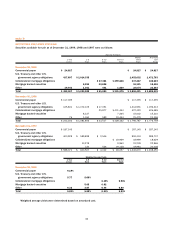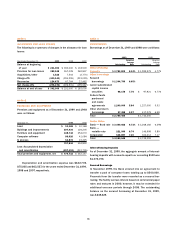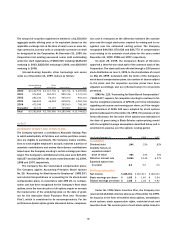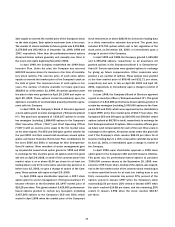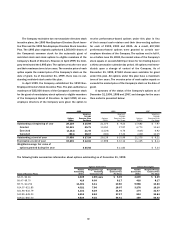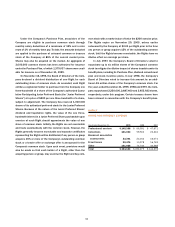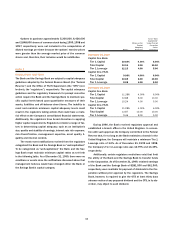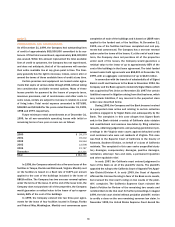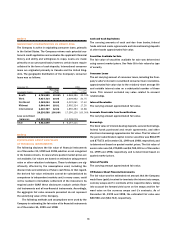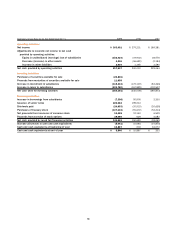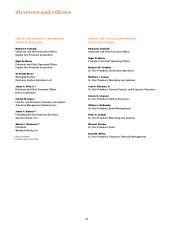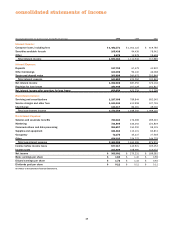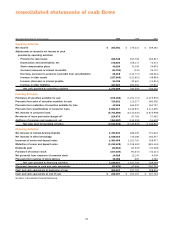Capital One 1999 Annual Report Download - page 61
Download and view the complete annual report
Please find page 61 of the 1999 Capital One annual report below. You can navigate through the pages in the report by either clicking on the pages listed below, or by using the keyword search tool below to find specific information within the annual report.
63
Options to purchase approximately 5,200,000, 6,436,000
and 2,848,000 shares of common stock during 1999, 1998 and
1997, respectively, were not included in the computation of
diluted earnings per share because the options’ exercise prices
were greater than the average market price of the common
shares and, therefore, their inclusion would be antidilutive.
note j
REGULATORY MATTERS
The Bank and the Savings Bank are subject to capital adequacy
guidelines adopted by the Federal Reserve Board (the “Federal
Reserve”) and the Office of Thrift Supervision (the “OTS”) (col-
lectively, the “regulators”), respectively. The capital adequacy
guidelines and the regulatory framework for prompt corrective
action require the Bank and the Savings Bank to maintain spe-
cific capital levels based upon quantitative measures of their
assets, liabilities and off-balance sheet items. The inability to
meet and maintain minimum capital adequacy levels could
result in the regulators taking actions that could have a mate-
rial effect on the Company’s consolidated financial statements.
Additionally, the regulators have broad discretion in applying
higher capital requirements. Regulators consider a range of fac-
tors in determining capital adequacy, such as an institution’s
size, quality and stability of earnings, interest rate risk exposure,
risk diversification, management expertise, asset quality, li-
quidity and internal controls.
The most recent notifications received from the regulators
categorized the Bank and the Savings Bank as “well-capitalized.”
To be categorized as “well-capitalized,” the Bank and the Sav-
ings Bank must maintain minimum capital ratios as set forth
in the following table. As of December 31, 1999, there were no
conditions or events since the notifications discussed above that
management believes would have changed either the Bank or
the Savings Bank’s capital category.
To Be “Well-
Capitalized”
Minimum For Under Prompt
Capital Corrective
Adequacy Action
Ratios Purposes Provisions
December 31, 1999
Capital One Bank
Tier 1 Capital 10.64% 4.00% 6.00%
Total Capital 13.11 8.00 10.00
Tier 1 Leverage 11.13 4.00 5.00
Capital One, F.S.B.
Tier 1 Capital 9.06% 4.00% 6.00%
Total Capital 10.69 8.00 10.00
Tier 1 Leverage 8.08 4.00 5.00
December 31, 1998
Capital One Bank
Tier 1 Capital 11.38% 4.00% 6.00%
Total Capital 13.88 8.00 10.00
Tier 1 Leverage 10.24 4.00 5.00
Capital One, F.S.B.
Tier 1 Capital 11.28% 4.00% 6.00%
Total Capital 13.87 12.00 10.00
Tier 1 Leverage 9.46 8.00 5.00
During 1996, the Bank received regulatory approval and
established a branch office in the United Kingdom. In connec-
tion with such approval, the Company committed to the Federal
Reserve that, for so long as the Bank maintains a branch in the
United Kingdom, the Company will maintain a minimum Tier 1
Leverage ratio of 3.0%. As of December 31, 1999 and 1998,
the Company’s Tier 1 Leverage ratio was 12.79% and 13.49%,
respectively.
Additionally, certain regulatory restrictions exist that limit
the ability of the Bank and the Savings Bank to transfer funds
to the Corporation. As of December 31, 1999, retained earnings
of the Bank and the Savings Bank of $281,500 and $61,900,
respectively, were available for payment of dividends to the Cor-
poration without prior approval by the regulators. The Savings
Bank, however, is required to give the OTS at least thirty days
advance notice of any proposed dividend and the OTS, in its dis-
cretion, may object to such dividend.


